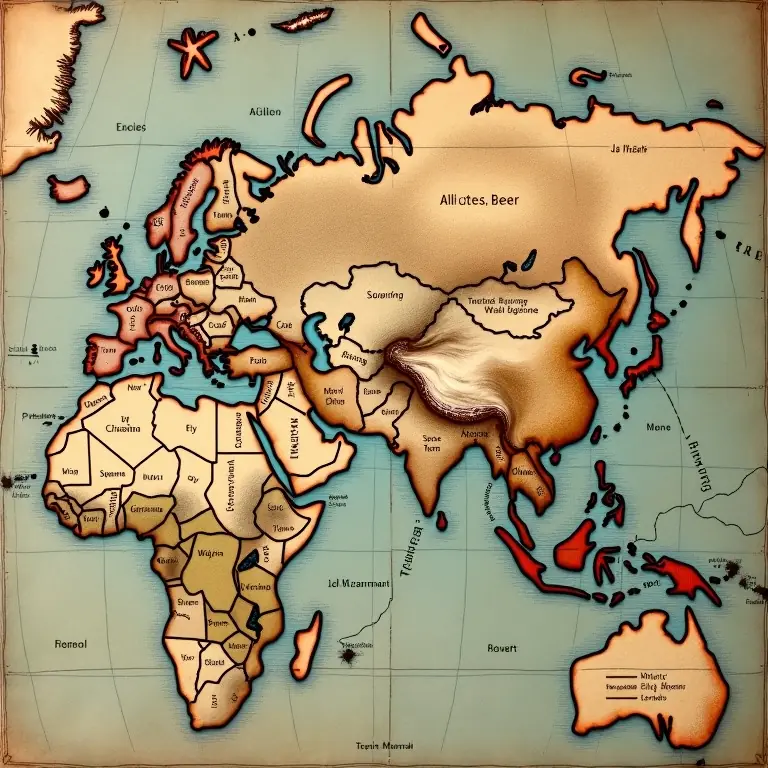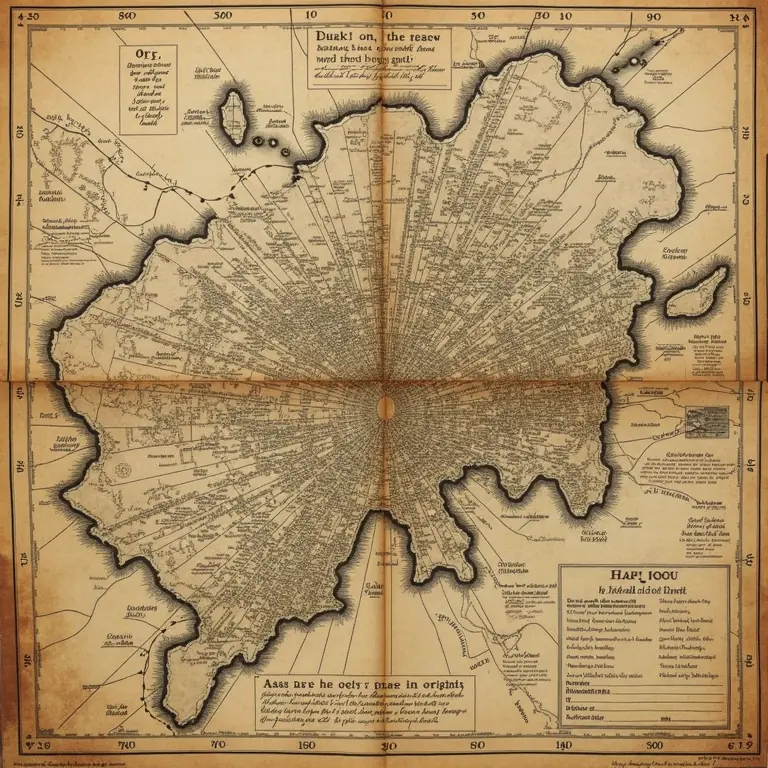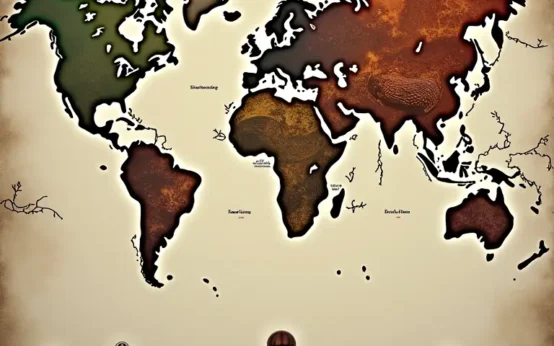Have you ever paused to consider why your town is called what it is? Or why that seemingly random street name exists? Beyond simple naming conventions, a fascinating history often lies beneath the surface of place names, revealing clues about the land, its people, and the events that shaped it. The study of place names, known as toponymy, isn’t just about linguistic trivia; it’s a window into the past, a form of historical detective work where the landscape itself speaks.
A Landscape Written in Names
Place names are rarely arbitrary. They’re typically rooted in the physical characteristics of the land, the activities of early inhabitants, or significant historical events. Consider names derived from topography. “Hill,” “Valley,” “Brook,” and “Wood” are incredibly common elements, directly describing the terrain. Similarly, “Stone,” “Sand,” or “Clay” point to the geological composition of the area. These are often the oldest layers of naming, reflecting the initial observations of those who first settled a region. Think about the prevalence of ‘Norton’ – almost always meaning ‘North Town’ or ‘North Farm’ – indicating a settlement situated geographically north of another. This seemingly simple naming convention, repeated across countries, illustrates a consistent human impulse to orient themselves within their environment.
But it goes deeper than simple descriptions. Names often encode information about the people who lived there, their livelihoods, or their beliefs. For example, many English place names ending in “-ham” (like Birmingham or Durham) originate from Old English, signifying a ‘homestead’ or ‘farm’. “-ton” (as in Newton or Preston) similarly means ‘settlement’ or ‘enclosure’. These suffixes provide immediate insight into the Anglo-Saxon period and the agricultural nature of early settlements. Similarly, names with Celtic roots, like those found in Wales and Scotland, often reference saints, natural features, or tribal affiliations. Understanding these origins requires delving into the languages that have shaped a region.
The Layers of Linguistic Influence
The etymology of place names is rarely straightforward. Over centuries, regions experience waves of migration, conquest, and cultural exchange, each leaving its linguistic mark. England, for instance, presents a particularly rich tapestry of influences. Before the Anglo-Saxon invasion, Celtic languages dominated. Then came Old Norse, with the Vikings leaving their imprint on the landscape, particularly in northern England. Later, the Norman Conquest introduced French, and subsequent periods saw influences from Dutch, German, and other languages. This linguistic layering means a single place name can hold clues from multiple historical periods.
Consider the name ‘York’. Its origins lie in the Roman fortress of ‘Eboracum’. The Anglo-Saxons transformed it into ‘Eoforwic’, and the Vikings further adapted it to ‘Jórvík’. The Norman Conquest eventually resulted in the modern form, ‘York’. Each iteration reflects the dominant power and language of the time. Tracing these transformations is like peeling back the layers of an archaeological dig, revealing the successive civilizations that have inhabited a place.
Common Naming Patterns and Their Meanings
Topographical Names
As mentioned earlier, topographical names are ubiquitous. Beyond simple descriptors, they can reveal more nuanced details. ‘Blackpool’, for example, doesn’t just indicate a pool of water; the ‘black’ likely refers to dark-colored peat or soil. ‘Redruth’ in Cornwall suggests reddish earth. These subtle variations offer insights into local geological features.
Occupational Names
Many place names reflect the occupations of early inhabitants. ‘Smithfield’ (common across England) denotes a field where a smith – a metalworker – plied their trade. ‘Miller’s Dale’ indicates a valley where a mill was located. ‘Shepherd’s Bush’ suggests a place where shepherds grazed their flocks. These names offer glimpses into the economic activities of past communities.

Personal Names
Place names can also be derived from personal names, often those of prominent landowners or founders. ‘Kingston’ means ‘king’s town’ – a settlement associated with a king or royal authority. ‘Fitzwilliam’ incorporates the Norman-French prefix ‘Fitz’ meaning ‘son of’, followed by a personal name, William. These names demonstrate the social structures and power dynamics of the past.
Religious Names
The influence of religion is evident in numerous place names. Many towns and villages are dedicated to saints, such as ‘St. Albans’ or ‘St. Andrews’. ‘Kirk’ (Scottish) and ‘Church’ (English) signify the presence of a church or religious community. These names reflect the importance of religion in shaping the landscape and the lives of people.
The Role of Surnames in Place Names
Sometimes, place names evolve from surnames. A family might have owned land in a particular location, and the area eventually became known by their name. For instance, ‘Livingston’ originates from the surname of the Livingston family. This highlights the connection between individual histories and the broader landscape.
The Unexpected Persistence of Ancient Roots
What’s truly remarkable is how consistently ancient roots persist. Names originating in the Bronze Age or Iron Age, often Celtic or pre-Celtic, can still be found today, albeit often modified through centuries of linguistic change. This speaks to the deep connection people have to their land and the enduring power of ancestral names. It also highlights the relative stability of certain landscape features – a prominent hill or river, for example, is likely to retain a name associated with it for millennia.
Place Names as Historical Records
Place names aren’t merely labels; they’re historical records encoded in language. They provide valuable evidence for understanding settlement patterns, land use, social structures, and cultural beliefs. By studying these names, historians and linguists can reconstruct the past and gain a deeper appreciation for the evolution of landscapes and communities. For example, analyzing the distribution of place names containing specific elements (like “-ham” or “-ton”) can reveal patterns of Anglo-Saxon settlement. Similarly, the presence of Norse-derived names can indicate areas of Viking influence.
Digital Resources for Exploring Place Name Etymology
Fortunately, numerous resources are available for exploring the etymology of place names. The Ordnance Survey’s place name database (in the UK) is a valuable source of information. Online etymological dictionaries and historical maps can also provide clues. Local historical societies and libraries often possess detailed knowledge of place name origins in their areas. The internet has made this research more accessible than ever before.

The Global Perspective: Universal Patterns
While this discussion has largely focused on England, the principles of place name etymology apply globally. Similar patterns of topographical naming, occupational naming, and personal naming are found in cultures around the world. The human tendency to connect names to the land, to commemorate events, and to honor ancestors is universal. For example, the use of descriptive names based on local flora and fauna is common in many languages.
The study of place names provides a powerful lens for understanding the interconnectedness of human history and the natural world.
Beyond the Obvious: Subtle Clues and Hidden Meanings
Sometimes, the most intriguing insights come from seemingly minor details. The subtle variations in spelling or pronunciation can reveal lost linguistic forms or forgotten historical events. For instance, a place name might have undergone a folk etymology – a reinterpretation of its original meaning based on a misunderstanding of its linguistic roots. Recognizing these subtleties requires a careful and nuanced approach to etymological research.
The Future of Place Name Studies
As our understanding of linguistics and history continues to evolve, so too will our ability to decipher the stories embedded in place names. Advances in digital mapping, historical databases, and computational linguistics are opening up new avenues for research. The study of place names is not a static field; it’s a dynamic and ever-evolving discipline.
Connecting the Dots: Place Names and Other Historical Disciplines
The study of place names isn’t isolated. It intersects with numerous other historical disciplines. It informs archaeological investigations, providing context for settlements and land use. It complements historical geography, helping to reconstruct past landscapes. It enhances genealogical research, revealing the origins and movements of families. And, as you’ll see in related articles, it even connects to seemingly disparate fields like the science of dyes in historical textiles, the design of antique compasses and navigational instruments, the logic behind antique puzzle jugs and their deceptive designs, the science of historical weather vanes and meteorological lore, and even the optics of vintage spectacle frames and facial recognition technology. The consistency of human ingenuity and adaptation is remarkable across these different areas.
Ultimately, the study of place names reminds us that the landscape is not a neutral entity. It’s a palimpsest – a surface that has been written on and rewritten over centuries, each layer contributing to the rich and complex history of a place. By learning to read these names, we can unlock the stories that lie hidden beneath our feet.
Toponymy: The study of the origin, meaning, and use of place names.


 The Curious Acoustics of Historical Echo Chambers: Resonance, Ritual, and Revelation
The Curious Acoustics of Historical Echo Chambers: Resonance, Ritual, and Revelation  The Curious Cartography of Scent: Mapping Perfume Ingredients Through History
The Curious Cartography of Scent: Mapping Perfume Ingredients Through History  The Curious Lexicon of Lost Trades
The Curious Lexicon of Lost Trades  The Surprisingly Consistent Science of Historical Ice Harvesting – A Frozen History of Commerce & Preservation
The Surprisingly Consistent Science of Historical Ice Harvesting – A Frozen History of Commerce & Preservation  The Unexpectedly Consistent Science of Historical Buttonhooks – Fashion, Function & Forgotten Tools
The Unexpectedly Consistent Science of Historical Buttonhooks – Fashion, Function & Forgotten Tools  The Surprisingly Consistent Science of Historical Toy Soldiers – Miniature Warfare, Materials & Collective Play
The Surprisingly Consistent Science of Historical Toy Soldiers – Miniature Warfare, Materials & Collective Play